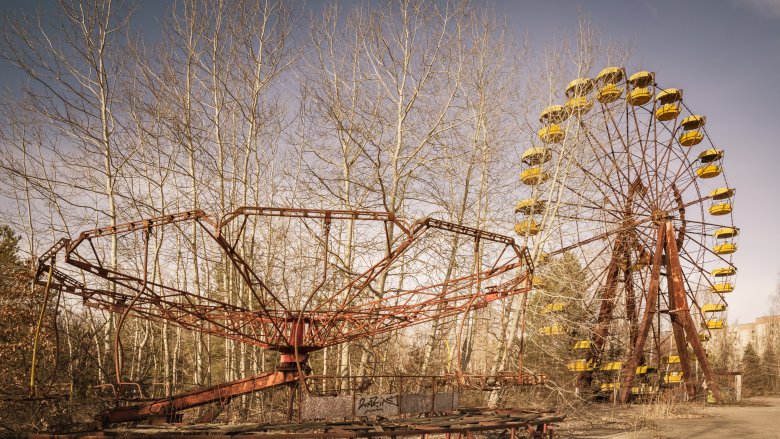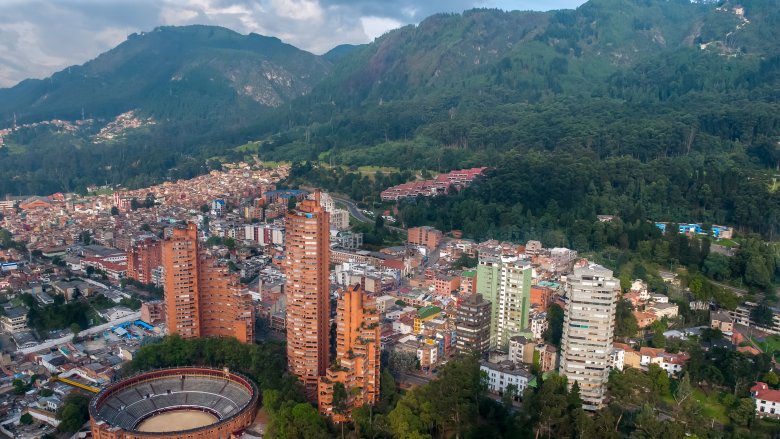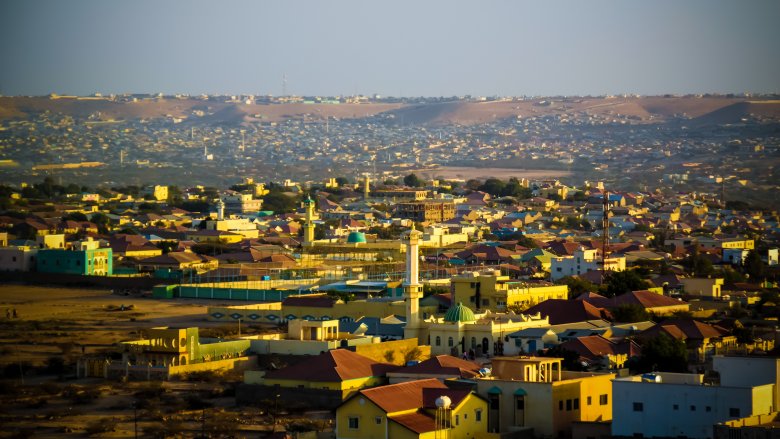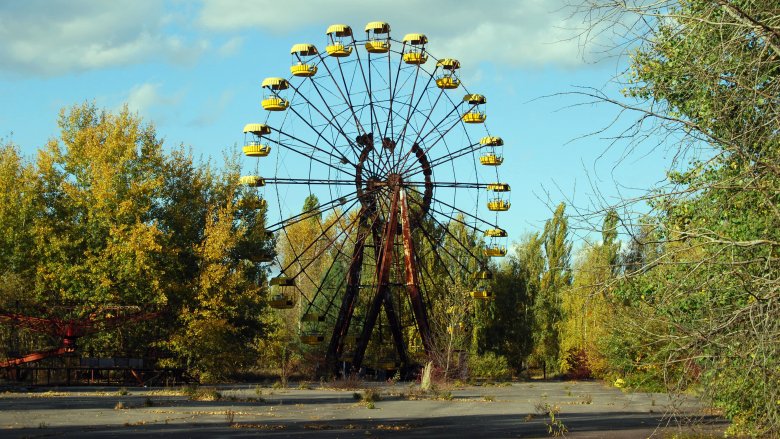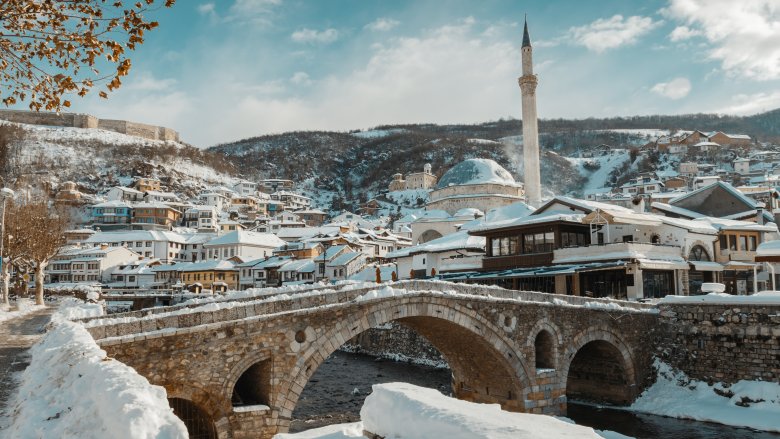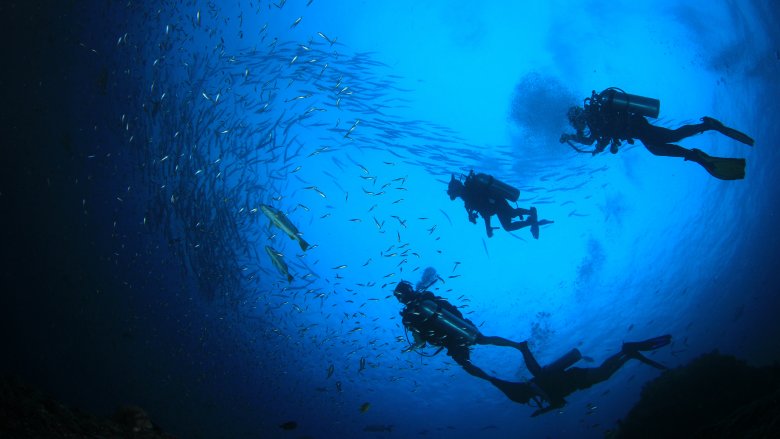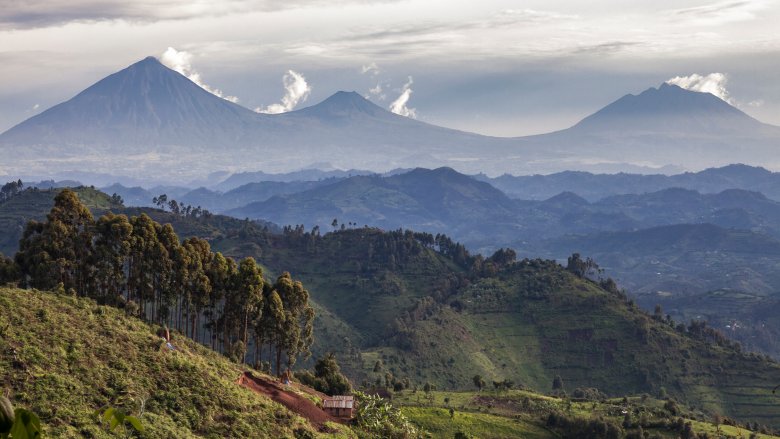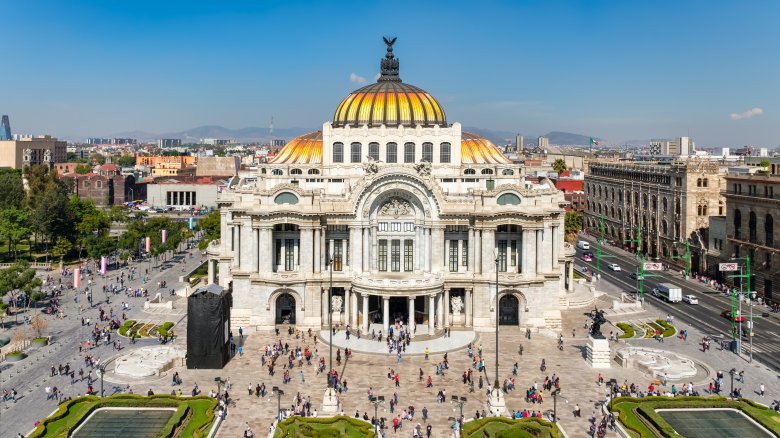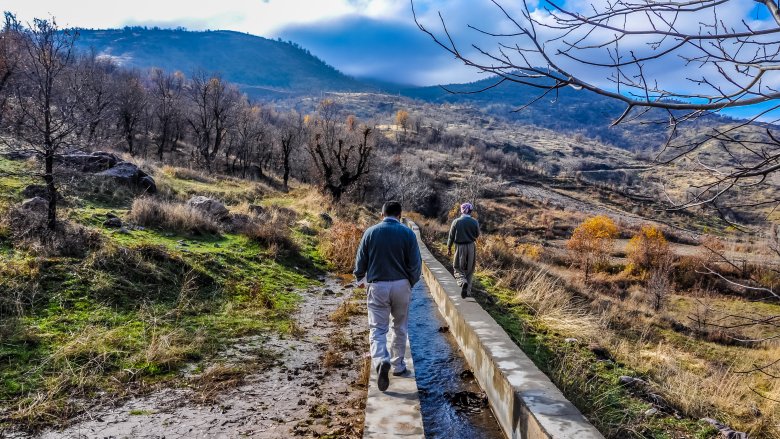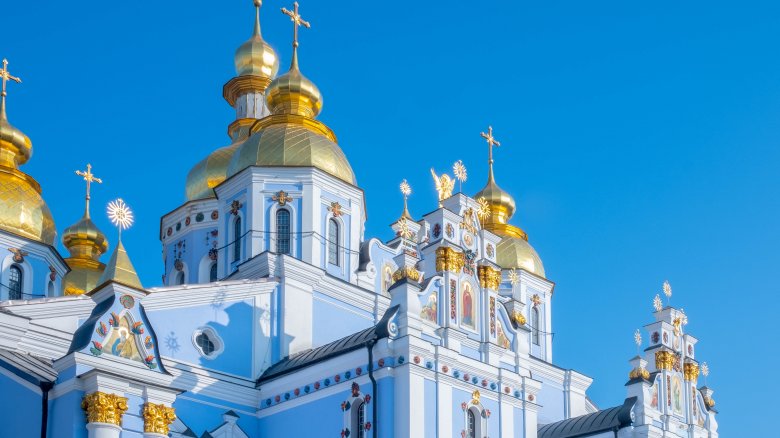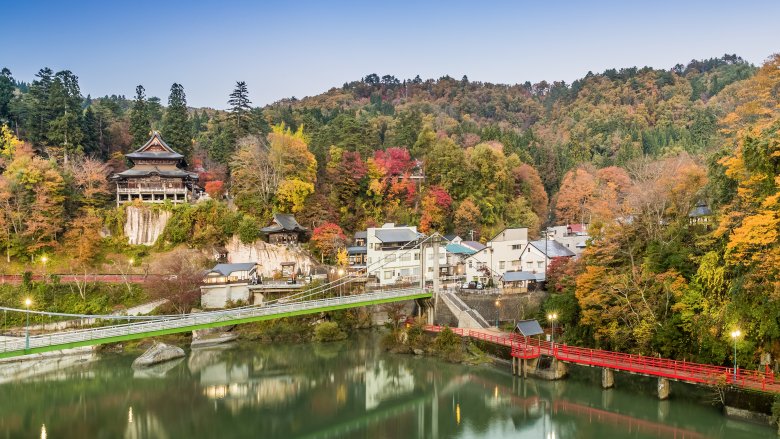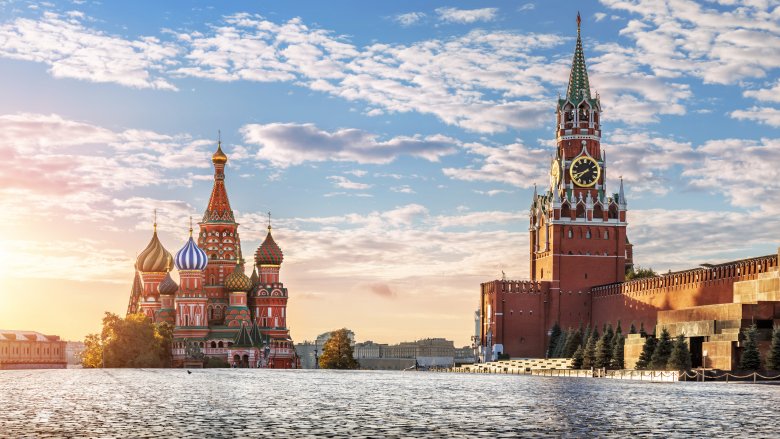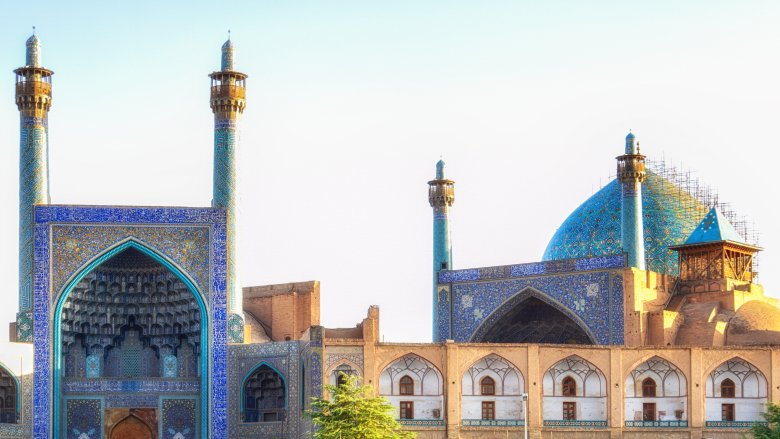Supposedly Dangerous Places That Are Totally Fine To Visit
Travel may broaden the mind, furnish us with good stories, and make us delightfully insufferable on Instagram, but there are still places none of us would ever dream of visiting. No one in their right mind would vacation on Syria's front lines or in the economic disaster area that is currently Venezuela. Great as all those selfies of you posing before rare vistas are, they kinda lose their sheen if the context people see them in is not your "My Awesome Life" Facebook album, but in a listicle about idiots who died while visiting dangerous places.
But maybe those dangerous places are not the ones you think. While there are certainly countries you should never visit, there are even more saddled with terrifying reputations that are totally undeserved. If you have a yearning to see somewhere offbeat and edgy without ever experiencing any actual danger, these may be the places for you.
Just a quick note: All this information assumes you're a sensible human who isn't going to disrespect local cultures, start fights with cops, or try to drunkenly ride a wild zebra. If you can't promise that, you should probably just rethink this traveling lark altogether.
Colombia's narco days are over
What do you think of when you hear "Colombia"? For most people, the answer probably involves Pablo Escobar, cocaine, soccer, kidnapping, and more cocaine. Ground zero for both an explosion of narcoterrorism and one of the worst civil wars in the Western hemisphere (the Colombian conflict has killed 260,000 in 50 years), Colombia has a reputation centered on drugs and violence. Nor is it all in the past. 2018 saw the deadliest terrorist bombing in Bogota in decades, and cocaine production reached record levels the year before (via BBC).
There's no doubt Colombia is a troubled country. But it's also way less troubled than you're probably expecting. Take the murder rate. In 2018, Colombia's murder rate hit its lowest level in recorded history (via the Conversation). You're statistically more likely to be murdered in New Orleans or Baltimore than in Bogota. As Lonely Planet surmises, visitors to Colombia who take the same basic precautions they would at home are unlikely to encounter any problems.
The reason for this is that Colombia's drug and gang violence largely takes place in remote jungle areas tourists never visit. So long as you avoid drugs — as you probably should given cartels are, y'know, murdering locals to get you your blow — visiting should be fine.
Somaliland is not Somalia
It's a country that's been in a state of continuous civil war since the early 1990s. A place known for pirate activity, Islamist extremism, and terrorist attacks like the October 2017 truck bombing that killed more than 500 people. It's one of the most unstable, dangerous countries on Earth. Its name is Somalia, and it's a totally different place from Somaliland.
A former part of Somalia that declared autonomy in the early days of the civil war, Somaliland is unrecognized as a state on the world stage. However, that hasn't stopped it from forging its own identity as a safer, infinitely more stable version of its next-door neighbor. Sure, it's not exactly like visiting, say, Barcelona in the safety department, but it's actually a pretty secure place by regional standards. The South China Morning Post, in an article encouraging readers to visit Somaliland, notes that the last significant terror attack took place in 2008. By contrast, Somalia has suffered so many that there's a directory on Wikipedia.
To see how vast the difference is between Somalia and Somaliland, look no further than Bradt. The respected travel guide publisher has a book dedicated to Somaliland that is at pains to describe how the unrecognized state is a peaceful, stable democracy. Somalia, on the other hand, is absent from their guidebook list.
Chernobyl: Not much radiation, zero radiation zombies
In 1986, Reactor No. 4 at the Chernobyl nuclear power plant in Ukraine blew its top in a spectacular light show that also, unfortunately, had the power to melt the flesh from your bones. The worst nuclear disaster in history, the Chernobyl meltdown released more radiation than the Hiroshima bomb, and resulted in the creation of a permanent exclusion zone around the plant that will not be habitable for literally thousands of years (via National Geographic).
Given all this, you might be thinking that the only people who can visit the ruined reactor are Ukrainian scientists with both extremely heavy hazmat suits and extremely strong death wishes. You'd be wrong. While actually living in the exclusion zone is inadvisable, visiting is a risk free pastime. As Lonely Planet notes, it's possible to take 12-hour tours of the zone and still receive less radiation than you would on a transatlantic flight.
The thing with Chernobyl is that the radiation wasn't distributed evenly. There are hotspots that have been carefully mapped, and tours avoid these like the plague. The real danger comes if you wander off alone into the forests and start eating the local mushrooms, but since you're closely supervised at all times, you probably wouldn't get a chance to pull off an act of such epic stupidity. Around 50,000 people visited in 2017. The number of those who are now radioactive zombies? Zero.
Kosovo loves Westerners
A byword for war ever since the bloody 1998-99 conflict with Serbia, the semi-recognized state of Kosovo has a reputation that's not just in the sewer, but so far below the surface that not even morlocks dare venture down there. The few times Kosovo appears in the Western press, it's usually as a result of the thousands of landmines and unexploded bombs still littering the countryside (via Wired). Add to that a reputation for crime and street gangs shared with neighboring Albania, and it's no wonder people steer clear.
Well, pardon the French, but people don't know doodie about diddly-squat. Kosovo may be poor, full of landmines, and suffering from endemic corruption, but it's also about as dangerous as a litter of adorable puppies. Lonely Planet calls it "perfectly safe." The British Foreign Office, usually the very definition of "cautious" notes that "most visits to Kosovo are trouble-free." Provided you don't travel to the Serbian border or go walking around random fields where bombs might lurk, nothing bad will likely happen to you.
If you're American, there's the added bonus that Kosovars are often called "the most pro-American people in the world." That's thanks to the U.S. spearheading the NATO air campaign against Serbia in 1999. Now, statistically you were probably not involved in the air campaign, but hey, free beer bought by grateful locals is still free beer.
Bikini Atoll is more than just hydrogen bombs
Sixty years ago, the U.S. politely asked the inhabitants of Bikini Atoll in the Marshall Islands if they'd mind evacuating their homes for a short while. The moment the islanders were gone, they detonated 23 hydrogen bombs in the water, on the land, and in the air around the atoll, including the biggest bomb the U.S. ever tested (via Medium). Bikini Atoll was burned by nuclear fire, torn apart by shockwaves, and swamped beneath a blanket of radiation. When the islanders asked to return, Uncle Sam just kind of said "err, yeah, about that" and quickly walked away whistling nonchalantly.
Fast-forward to today and Bikini Atoll is totally uninhabitable. The groundwater is badly contaminated, and while the coconuts don't glow green, they're not a great choice of food unless you really feel that you have too much hair and a haircut won't do it. But that's not to say you can't or shouldn't visit. The Marshall Islands allows tourists to scuba dive on the very edges of the atoll, including through the wrecks of U.S. battleships sunk during the atomic tests.
There are plenty of tour companies offering these trips, and they're at pains to stress just how safe these dives are. While they can't guarantee you won't encounter bloodthirsty pirate ghosts, they'll make sure you don't get radiation poisoning.
Rwanda has moved on since the genocide
Of all the words to have associated with your country, "genocide" has to be one of the least desirable, right down there with "airborne chronic itching." But that's the sad fate of the tiny African nation of Rwanda. In 1994, a 100-day slaughter by Hutu extremists killed 800,000 Tutsis and moderate Hutus, ending only when Paul Kagame marched his army on the capital and placed Rwanda under martial law. The new Rwanda then went to war with neighboring Zaire for aiding the genocidal Hutus, eventually triggering a conflict that killed 5 million. Yeesh.
1994 might seem like recent history, but it was actually a pretty long time ago. Long enough for Rwanda to not just rebuild itself under Kagame but completely transform. Today, Rwanda is a tech hub with a booming economy, some of the safest streets on the continent, and strict laws against ethnic discrimination.
If you're feeling doubtful, just check out Lonely Planet, which calls Rwanda one of the safest countries in East Africa, and says its capital, Kigali, "is a genuine contender for safest capital in Africa." The Telegraph likewise notes that "crime levels are relatively low," and that the average Rwandan life expectancy has shot up 13 years since pre-genocide days. As for ethnic strife, well, attempts at reconciliation have been so successful that some 3,000 Tutsis today even live peacefully alongside Hutus who murdered their relatives (via the Guardian). Yes, literally.
Mexico is more than just guns and drugs
The Mexican drug war is one of the nastiest conflicts Earth has going. Lurid violence between cartels has seen Mexico's murder rate skyrocket to record levels (via the Guardian). There are gun battles in tourist areas, mass killings of hundreds of civilians, and hyper-sadistic slaughters in which people are dispatched less like they're in real life and more like they're trapped in a Saw movie. There's a reason Acapulco and other formerly hot Mexican destinations are now devoid of foreign tourists, and that reason is self-preservation.
But while Mexico is an extremely dangerous place in general, once you dig into specifics it's surprisingly safe for visitors. Even as some areas sink into a mire of violence, others are ranked among the safest locales in Latin America.
You can see this discrepancy even within cities, such as Tijuana. With a booming homicide rate and meth trade, Tijuana should be the perfect candidate for a tourist town now avoided by tourists. But Vice reports that visitor numbers are exploding, thanks mainly to the current iteration of the drug war playing out not on the main drag, but on the outskirts and in slums. Elsewhere, there are entire cities or regions that never see any drug violence. According to Lonely Planet, Mexico City is so safe that some visitors even complain it feels like a Disney-fied version of itself. Because a lack of brutal violence is always a letdown, apparently.
Iraqi Kurdistan: The (mostly) safe part of Iraq
Here's a fun game you can play with older relatives: Tell them you've just booked a two-week vacation in Iraq. Provided your folks aren't a pair of Bear Grylls clones they'll probably throw a fit. At which point you can reveal that you're actually visiting Iraqi Kurdistan, the one part of Iraq that doesn't currently come stamped with the warning "may contain death."
There's an easy way to tell the difference between Iraq and Iraqi Kurdistan. One is a country that endured a devastating U.S. occupation, a bitter sectarian civil war, and is still dealing with terrorism. The other is a peaceful, economically successful autonomous region that avoided all those things, despite fighting ISIS on the battlefield.
You can see this just by comparing travel experiences. Visitors to Baghdad encounter bombings, shootings, and an atmosphere you could describe as "unbearably tense." Travel writers visiting Iraqi Kurdistan, on the other hand, have described bustling metropolises and an overwhelming feeling of safety. Throw in some intense natural beauty and you've got a winner. Given the current climate in the Middle East, you can never be too careful when visiting the region. But if you have an overwhelming desire to visit one of the cradles of civilization, doing so via Iraqi Kurdistan is probably your safest option.
Ukraine is more than just a war
When you hear the name of a country, that's usually the country you picture. With Ukraine, this simple logic breaks down. Ukraine may be the geographical entity everyone is nominally talking about, but most people are probably picturing a much bigger, much more aggressive nation: Russia. That's because Russia has been at the heart of Ukraine's PR problems for years. Following the 2014 revolution that ousted the pro-Moscow president, Russia has annexed Crimea, transformed eastern Ukraine into a warzone, and generally acted like crippling the struggling nation's tourist industry is the only thing keeping Putin warm and cozy at nights.
But, hey, since when did image equal reality? Although the situation in the war-torn Donbass region may be desperate, Donbass is a tiny slice of southwest Ukraine a long way from anywhere. It's about 430 miles from Kiev and nearly 700 miles from the western tourist city of Lviv, further than the distance from Paris to Prague. To put it another way: too far to be dangerous.
But what about Ukraine's infamous far-right gangs? While Ukraine's thugs are a serious threat to people of nonwhite descent, they have little real presence in the multicultural cities (via Lonely Planet). Plus, Ukraine is a nation that has elected Jewish people as both its prime minister and president. Far-right sympathies can't be running that high.
Fukushima: Little radiation, no Godzilla
In 2011, a mega tsunami that hit Japan triggered a second apocalyptic disaster when the damage sent the nuclear reactor at Fukushima into meltdown. The resulting catastrophe became the second worst nuclear accident on record, behind Chernobyl. Although the Japanese government has officially recorded only a single death from the radiation leak so far (via Time), it's well known that the area was swamped with lethal particles. If you've watched Netflix's Dark Tourist, you're likely only too aware of the dangers of driving through or eating food in Fukushima Prefecture.
All of which goes to show you shouldn't trust random travel documentaries, kids! As Japan Guide somewhat testily notes, a mere 3 percent of Fukushima Prefecture was affected by the radiation. Of that 3 percent, only a tiny fraction still contains radiation levels higher than those you'd experience on your plane ride to Japan. The historic cities and mountains in the prefecture are mostly as safe as anywhere else in the country. The food, too, is legally required to have lower levels of radioactive substances than in either the U.S. or E.U.
On top of that, the Guardian reports that many locals are enthusiastic about welcoming in tourists on the basis that they'd rather you remembered Fukushima as an awesome holiday than a likely Godzilla spawning ground.
Russia still works as a tourist destination
If there were Olympic medals for "country treated with most suspicion over the centuries," Russia would be wearing so much gold it could restyle itself as a 1990s West Coast rapper. Everything from U.S. election interference to war crimes in Syria to botched assassinations using nerve agents have been laid at the Kremlin's door. Given Putin's flagrant disrespect for the E.U., constant meddling in the U.S., and ordering a Novichok attack in the U.K. (via the Telegraph), it's probably safe to assume that any Americans or Brits who wash up in Russia can expect serious attention from the security forces ... and that's before anyone even mentions the Russian mafia or the extremely dangerous driving.
Well, here's the thing. The current Russian government may indeed be filled with thugs and people who are about as trustworthy as a used car salesman with a briefcase full of nerve gas, but the regular people are a different matter. As travel site Culture Trip describes it, Russia is about as safe to visit as any other European country. While there are definite no-go areas — say hello, Chechnya, Dagestan, and the Ukrainian border! — the sort of places you're likely to visit are so far from scary you might as well be visiting a retirement home.
Iran has awful politics, wonderful people
Iran has been America's boogeyman since 1979, up there with North Korea in terms of scary warmongering places. The very name of the country conjures images of extreme Islamic laws, anti-Semitic politicians, and clandestine nuclear ambitions. Sure, it's safe in that it has a low crime rate and little terrorism, but this is a relative concept of safety. Any Americans or lone females who traveled there probably wouldn't come back screaming Iran's praises, would they?
Well, if you believe travel writers, that's exactly what they would do. Lonely Planet reports visitors calling Iran the "safest country (they've) ever been to" and "much safer than traveling in Europe." Even Americans are treated with the utmost courtesy, which is saying something after years of Iranian leaders calling the U.S. the Great Satan. A large part of this may be due to Iran's young population. While the elites still cling to the hardline rhetoric, those born after the revolution, as Huck Mag describes, tend to cling to social media, Western TV, Western music, even Western values.
As for female travelers, Iran's brand of hardline Islam is much less chauvinist than Saudi Arabia's. Female travel writers visiting solo or in all-female groups have reported feeling extremely safe. You can hate the Iranian regime and what it stands for, and all this advice will immediately change if war breaks out, but ordinary Iranians would apparently love to see you visiting their country.
